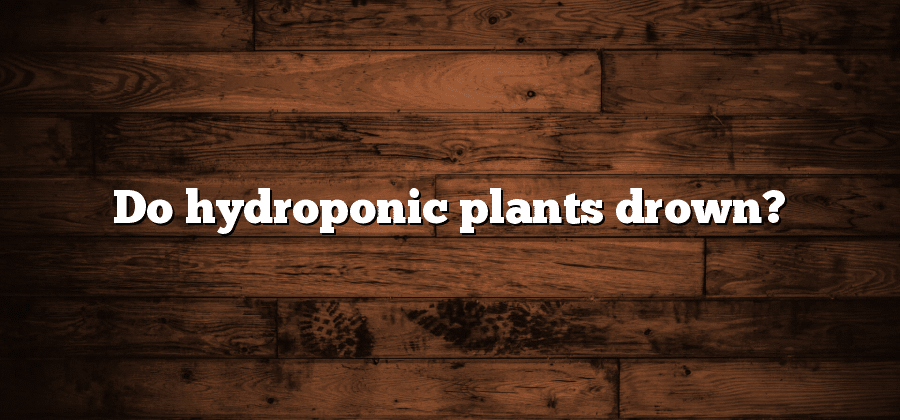Understanding the Water Needs of Hydroponic Plants
Hydroponic plants are unique in their ability to grow without the use of soil. Instead, they rely on a nutrient-rich water solution to provide them with the necessary elements for growth. Understanding the water needs of hydroponic plants is crucial for successful cultivation.
One important aspect to consider is the pH level of the water. Hydroponic plants tend to thrive in a slightly acidic environment, with a pH range of 5.5 to 6.5. Monitoring and adjusting the pH of the water regularly is essential to ensure that plants can absorb the nutrients efficiently.
Another factor to consider is the temperature of the water. Most hydroponic plants prefer a water temperature between 65 to 75 degrees Fahrenheit. This range provides optimal conditions for nutrient uptake and root development. Monitoring and adjusting the water temperature as necessary will help maintain healthy and vibrant hydroponic plants.
Overall, understanding the water needs of hydroponic plants involves monitoring and controlling the pH level and temperature of the water. By providing the ideal conditions, hydroponic enthusiasts can ensure that their plants receive the necessary nutrients to thrive and produce high-quality yields.
The Role of Oxygen in Hydroponic Systems
The role of oxygen in hydroponic systems cannot be overstated. Just as plants in soil need access to oxygen through the pores in the soil, hydroponic plants require a continuous supply of oxygen as well. This is because the roots of hydroponic plants are directly exposed to the surrounding nutrient solution, and without oxygen, the roots would suffocate and die.
Oxygen is vital for several key processes in hydroponic systems. Firstly, it is essential for respiration, where plants take in oxygen and release carbon dioxide. This respiratory process is crucial for converting stored energy into usable forms for growth. Additionally, oxygen is needed for the breakdown of organic matter by beneficial microorganisms in the nutrient solution, which helps prevent the build-up of harmful pathogens. Lastly, oxygen is involved in nutrient uptake by the plant roots, as it facilitates the movement of essential minerals and water into the root cells. Ultimately, maintaining adequate oxygen levels in hydroponic systems is essential for ensuring optimal plant health and growth.
Maintaining Proper Water Levels in Hydroponic Setups
Maintaining proper water levels in hydroponic setups is crucial for the successful growth of plants. Water serves as the primary medium for delivering essential nutrients to the plants, making it essential to keep a close eye on the water levels.
One key aspect of maintaining proper water levels is understanding the specific needs of different hydroponic plants. Each plant has unique water requirements, and it is essential to adjust the water levels accordingly. Some plants may require a constant supply of water, while others thrive in cycles of wet and dry conditions. By conducting thorough research on the specific plant varieties being grown, hydroponic growers can ensure the water levels are tailored to meet the plants’ individual needs.
Another key consideration when maintaining water levels in hydroponic setups is the quality of the water being used. Tap water often contains impurities and chemicals that can hinder plant growth. It is advisable to use filtered or purified water to ensure the plants receive clean water free from harmful contaminants. Additionally, monitoring the pH level of the water is important, as it can affect nutrient availability. Regularly testing the pH level and adjusting it as needed will help maintain optimal water conditions for hydroponic plants.
The Importance of Drainage in Hydroponic Systems
Hydroponic systems provide an efficient and innovative way of growing plants without soil. One crucial aspect of maintaining a successful hydroponic setup is ensuring proper drainage. The importance of drainage in hydroponic systems cannot be overstated, as it directly impacts the overall health and well-being of the plants.
Drainage plays a significant role in preventing waterlogged conditions, which can lead to root rot and other detrimental effects on plant growth. In a hydroponic system, plants receive their nutrients directly from the water solution in which their roots are suspended. However, if the water is not able to drain effectively, excess moisture can accumulate around the plant roots, suffocating them and impeding their ability to absorb nutrients efficiently. This, in turn, can result in stunted growth or even the death of the plant. Therefore, having an adequate drainage system in place is essential to maintain optimal growing conditions for hydroponic plants.
Potential Risks of Overwatering Hydroponic Plants
Overwatering is a common mistake made by many hydroponic growers, and it can have serious consequences for the health and productivity of their plants. One of the main risks associated with overwatering is the lack of oxygen in the root zone. When the growing medium is constantly soaked with water, it leaves little room for air to penetrate into the roots. As a result, the roots are deprived of the oxygen they need for respiration, leading to poor growth and overall plant health.
In addition to oxygen deprivation, overwatering can also create an environment conducive to the growth of pathogens and diseases. Excess moisture creates a damp and humid atmosphere, providing the perfect conditions for the proliferation of harmful bacteria, fungi, and other microorganisms. These pathogens can attack the weakened roots and cause root rot, leading to stunted growth, yellowing leaves, and even plant death. Furthermore, excessive moisture on the leaves and stems can also promote the development of leaf diseases such as powdery mildew and downy mildew, further compromising the plant’s health and productivity.






